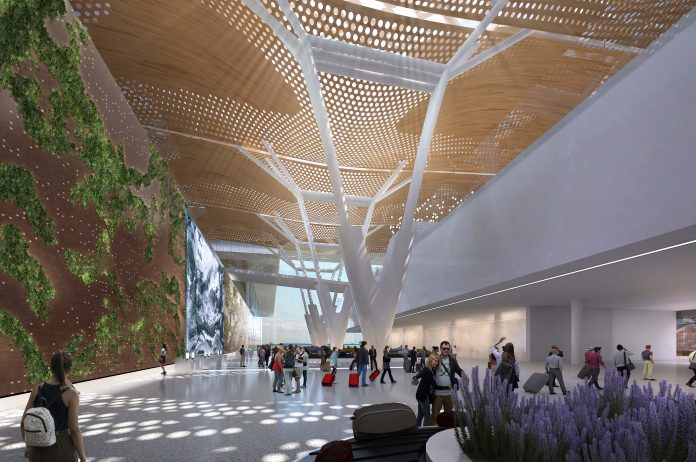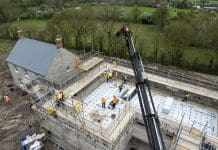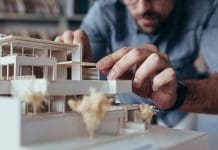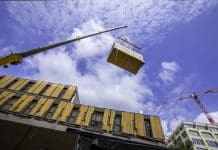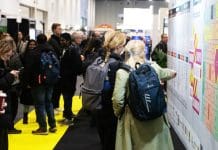Jorge Beroiz, director at CallisonRTKL, looks at zero carbon building techniques and new innovations including by-product materials, such as using rice husks for sustainable cladding
The ESG agenda has come to the fore in recent years. We are seeing the rise of sustainable property funds and green investing, pledges from corporations to reduce their carbon footprint and a new wave of consumers who are ultra-aware of where their products come from and how they spend their money. As of last week, we’re also seeing Joe Biden’s presidential win signalling America’s return to the Paris Agreement.
Aligned to this, the UK Government has committed to becoming net-zero carbon by 2050 and the UK Green Building Council has recently laid out its guidelines for those wanting to achieve net-zero carbon in construction and operation. These are all hugely positive signs, however we must not forget the harsh reality of the numbers we are trying to tackle; the built environment is responsible for around 40% of the UK’s total carbon footprint, while cement alone is the source of up to 10% of the world’s carbon CO2 emissions.
Bluntly, there is no Planet B and as an industry, we must innovate and collaborate to help create lasting change, from sustainable design to new materials and methods of construction.
Design for Manufacture and Assembly
We are seeing increased adoption of the Design for Manufacture and Assembly (DfMA) philosophy. This is the method for improved process and cost optimisation of the entire manufacturing process and is exemplified by volumetric and modular systems for construction, utilising both timber solutions and light gauge steel. Design digitisation and the increased use of BIM (Building Information Modelling) aligns with this, allowing for increased precision and minimal wastage of materials.
Material innovation
Reducing embodied carbon is vital and at a material level, there is a lot to be excited about. The use of Cross Laminated Timber structures is picking up in the UK and Europe, as its speed, quality and environmental benefits become more widely understood. However, successful applications for CLT in higher rise structures are limited so far and to achieve true zero carbon status we must even consider the glue that it used to laminate the timber – is it equally sustainable? The increasing usage of wooden pile foundations, utilising just small amounts of concrete and steel, is also a move in the right direction.
Where concrete must be used, Cemfree is increasingly being adopted on projects of various sizes. This low carbon alternative to traditional Ordinary Portland Cement (OPC) – concrete’s most carbon-heavy material – can create CO2 savings of up to 88% per project. Equally, the use of by-products as building materials must also be explored, such as fly-ash, a by-product of burning coal, which can be substituted for up to 35% of cement in concrete mixes. Even more innovative, we are now seeing external cladding created from rice husk, offering the same qualities as timber, as well as progress in the usage of unexpected items such as recycled peanut shells.
Increasing operational efficiency
Ensuring we have the correct materials at our disposal is one thing but as the World Green Building Council points out, operational emissions (from energy used to heat, cool and light buildings) accounts for 28% of total global CO2 emissions.
First of all, we should try should achieve the passive approach and save energy by designing buildings responsive to local climates, only then implementing sustainable energy generation such as solar, biomass and wind.
Data centres could also form part of the solution here. In an increasingly cloud-based world with more people than ever working remotely, the number of data centres being built is on the rise and for many years, engineers have battled with how to keep these giant tech hubs cool. However, with modern innovations, the vast levels of heat they produce can actually be used or recycled to power and heat other buildings, from offices to homes via district heating systems.
Equally, the creation of urban farms and gardens as part of large scale commercial projects can provide a sustainable solution to feeding occupiers. This might seem radical but with the rise in hydroponic and vertical farming techniques, it is yet another way to streamline our footprint.
Above all, we must also consider the bigger picture and how new developments fit into their landscape. There is little point in creating ultra-sustainable buildings if everyone that uses them drives there in thirsty fuel-burning cars. As a result, the adoption of the transit-orientated design, which seeks to maximise the mix of residential, business and leisure space within short walking distance of public transport will be vital to the success of our places going forwards.
A global perspective
The UK has made significant progress in the adoption of sustainable design and construction. L&G has created its own modular factory in Yorkshire, with others starting to follow suite, while we are seeing a general increased appetite to rethink the way we build and develop.
Meanwhile, the French government has just announced plans for a sustainability law that requires all new public buildings to be built from at least 50% timber or other natural materials. The ambitious measure will be implemented by 2022 and will and impact all public buildings financed by the French state. This is a hugely positive move and one that I would like to see replicated elsewhere.
Further afield, in Mexico City, CallisonRTKL is currently designing one of the world’s first net-zero airports. The approach began with a clear, detailed analysis and understanding of the local climate in Guadalajara Mexico to determine climate responsive design opportunities and constraints. We took measures to reduce the direct sunlight on the facades with a roof that creates shadow to the facades while allowing daylight, which reduces heating to the building and energy needed for cooling. These higher investments led to lower investments in the required cooling capacity/installation, while additional strategies have also been implemented to control glare. Natural ventilation is integrated with the mechanical system, controlled through a building management system and the ‘chimney effect’ provides some clean filtered air, also reducing the cooling load while maintaining indoor air quality. We are aiming to reduce the airport’s energy use by 60% and its carbon footprint by over 90% – while this is big picture thinking, these types of technologies and innovations can be utilised on projects of varying sizes
Acting now for the future
Significant headway has been made towards designing and building a more sustainable future, however there remains a huge way to go. It requires a collaborative effort and mind-set shift from all stakeholders across the built environment – architects, developers, planners, local authorities, through to the very investors who fund development projects in the first place. We must act together now to help drive positive, long-lasting change.
Jorge Beroiz
Director
Twitter: @CallisonRTKL
LinkedIn: CallisonRTKL


